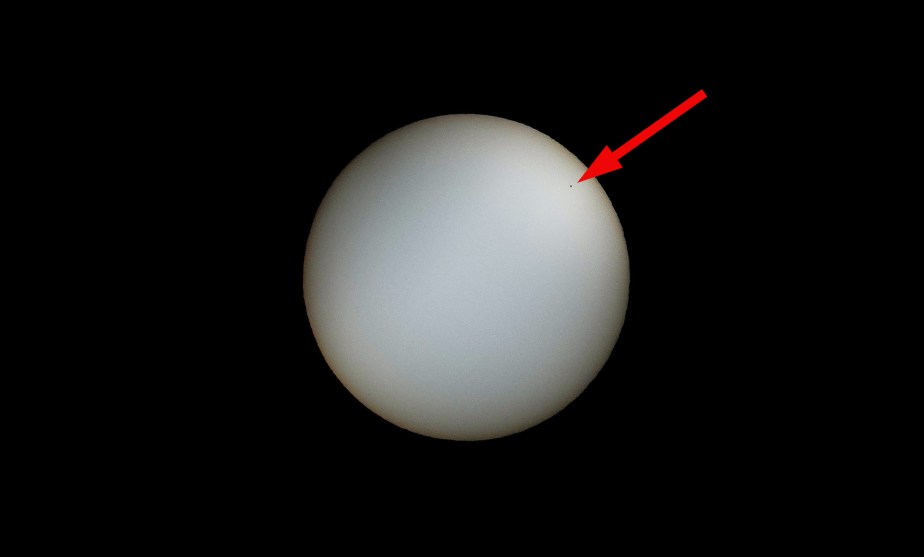
Today was the day of the great Mercury transit of the sun. Obviously NASA is the place to go for pictures of this event, which is, to be honest, not super exciting. However, I was curious whether my little camera could capture the transit.
I wasn’t hopeful, and when I woke up in the morning there was a solid marine layer filling the sky. So much for catching even the middle of the transit. But by 9:30 the clouds had burned off so I puttered out to my backyard to point my camera at the sun and see what I could get.
For you camera nerds out there, my settings were f/11, ISO 100, shutter speed 1/32000, and a 10x neutral density filter. And that was barely enough.
But enough it was. To my surprise, I got some perfectly decent pictures. Here’s my earliest one, with Mercury nearing the end of its transit. You can see it a lot better if you right-click and then select “View Image.”
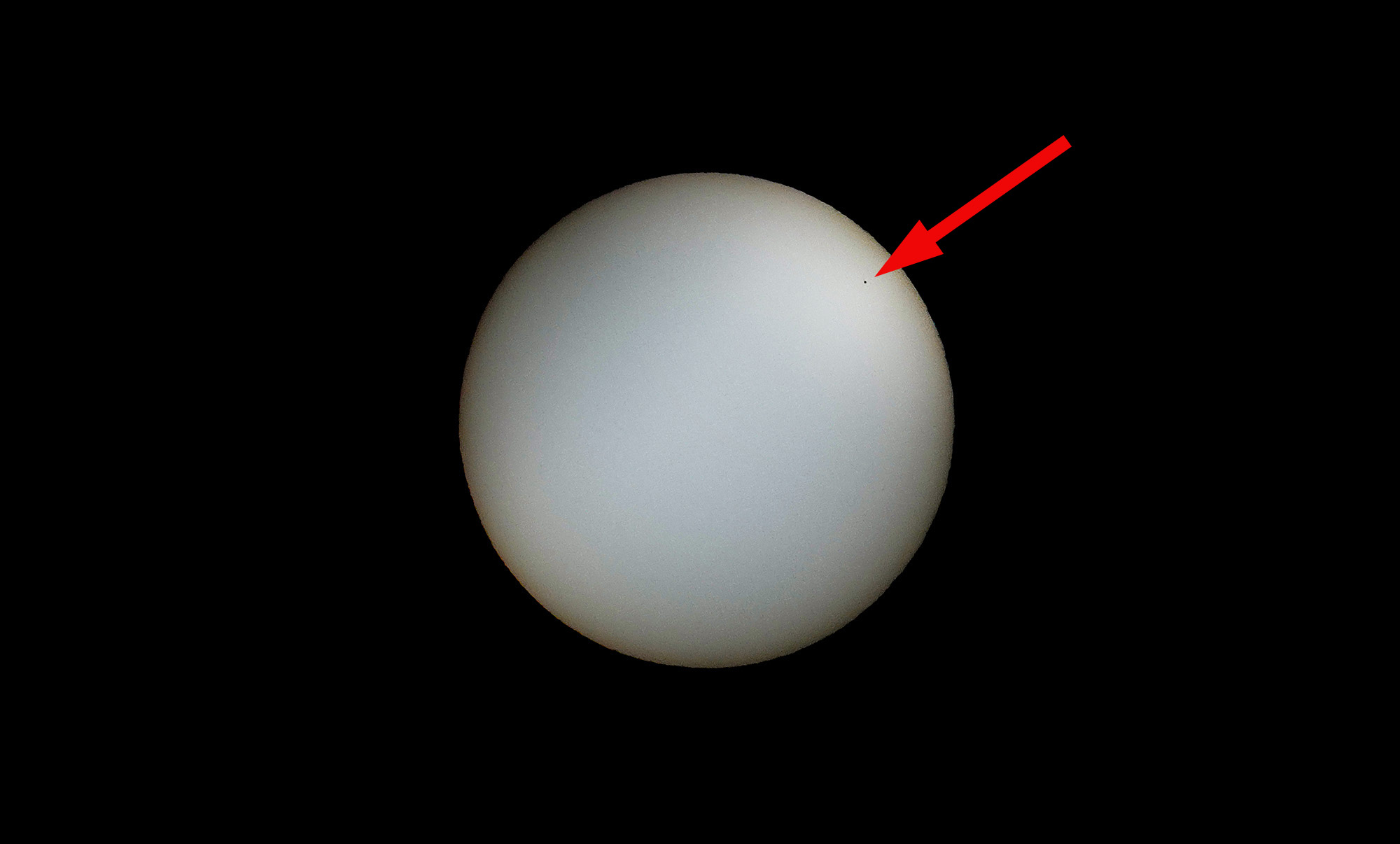
Here it is a few minutes later:
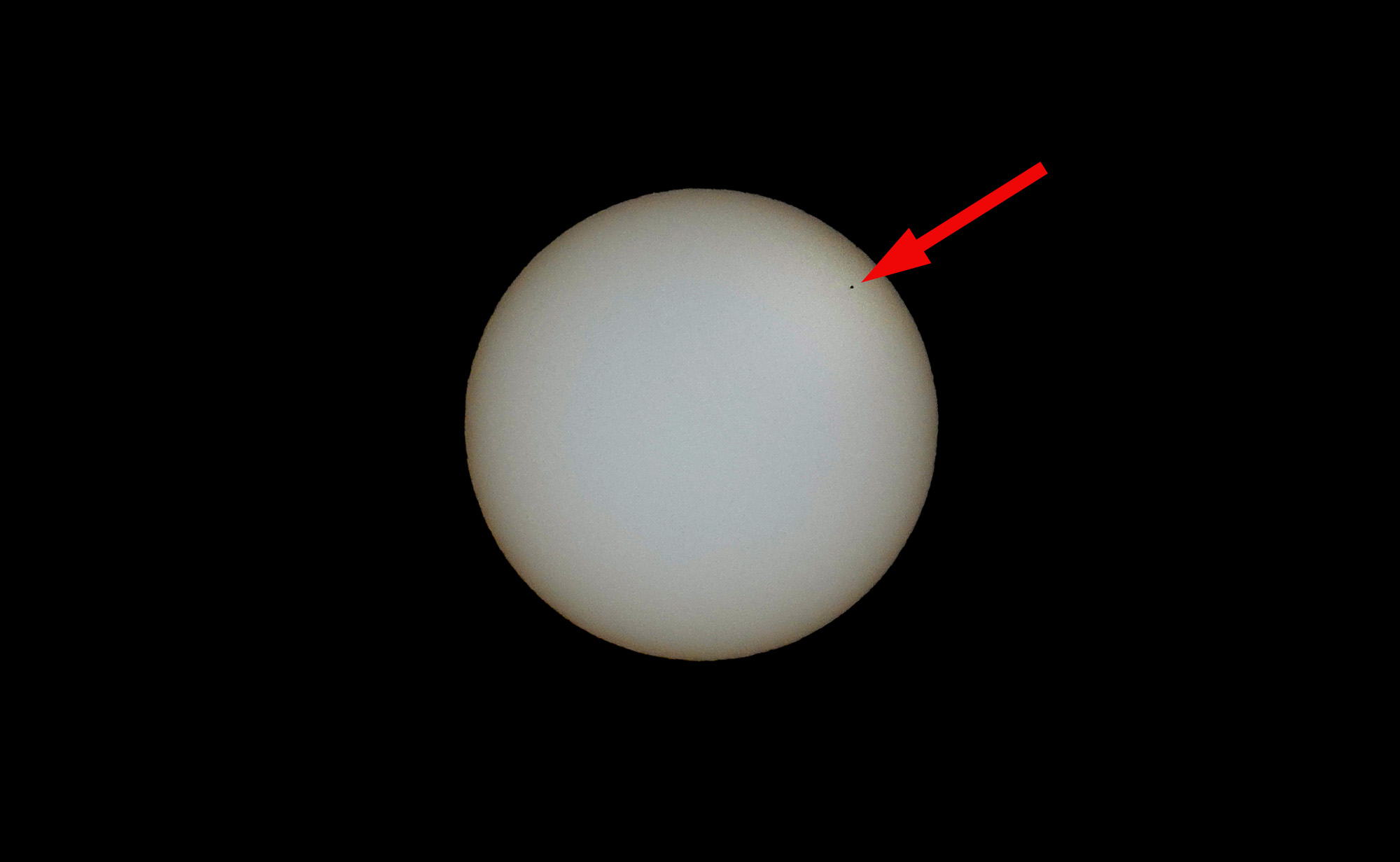
Now it’s getting very close to the edge of the sun:
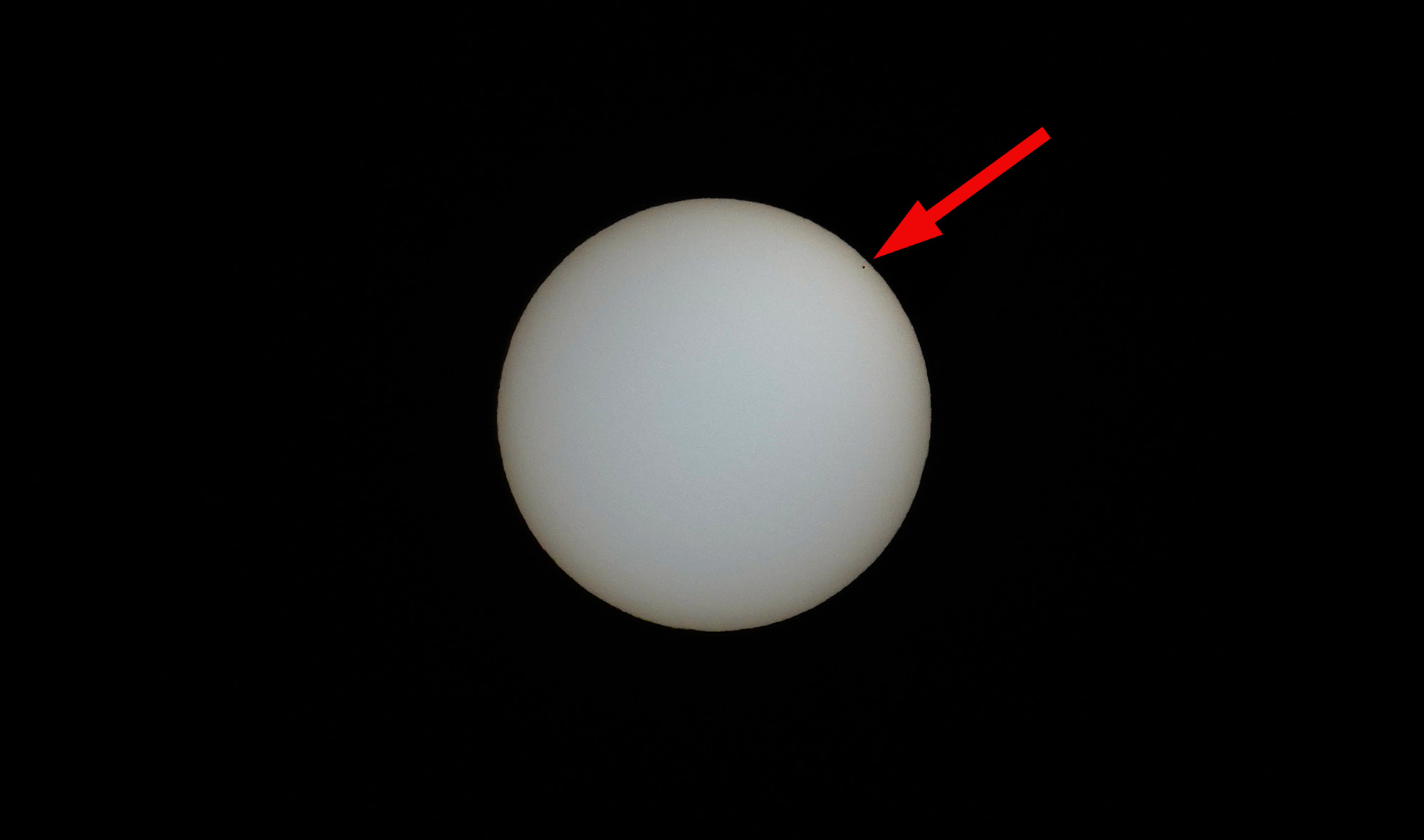
And finally it’s officially egressing the sun, just a barely visible dot at the very edge of the corona:
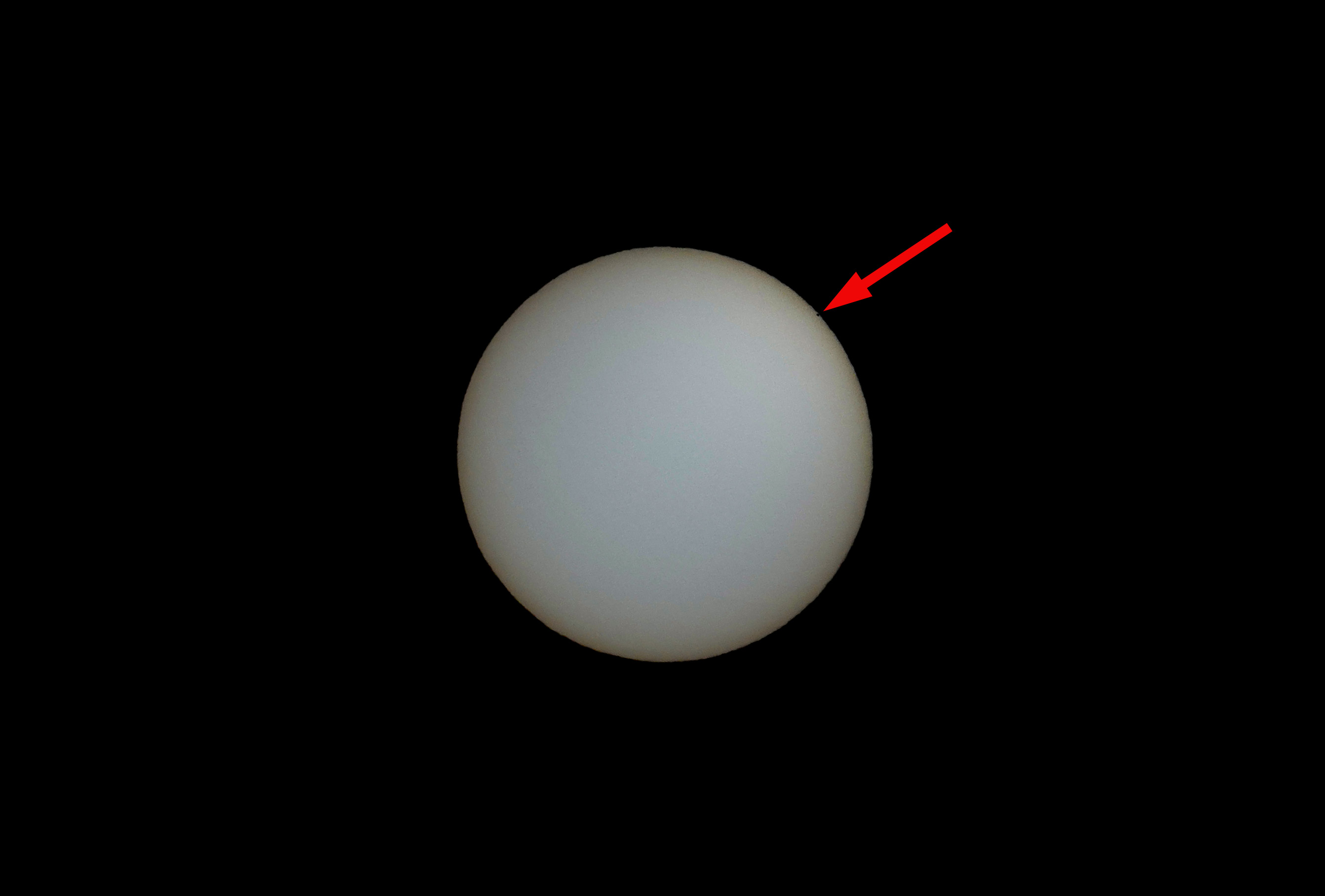
And that’s it. The next transit of Mercury is in 2032. Mark your calendars.















